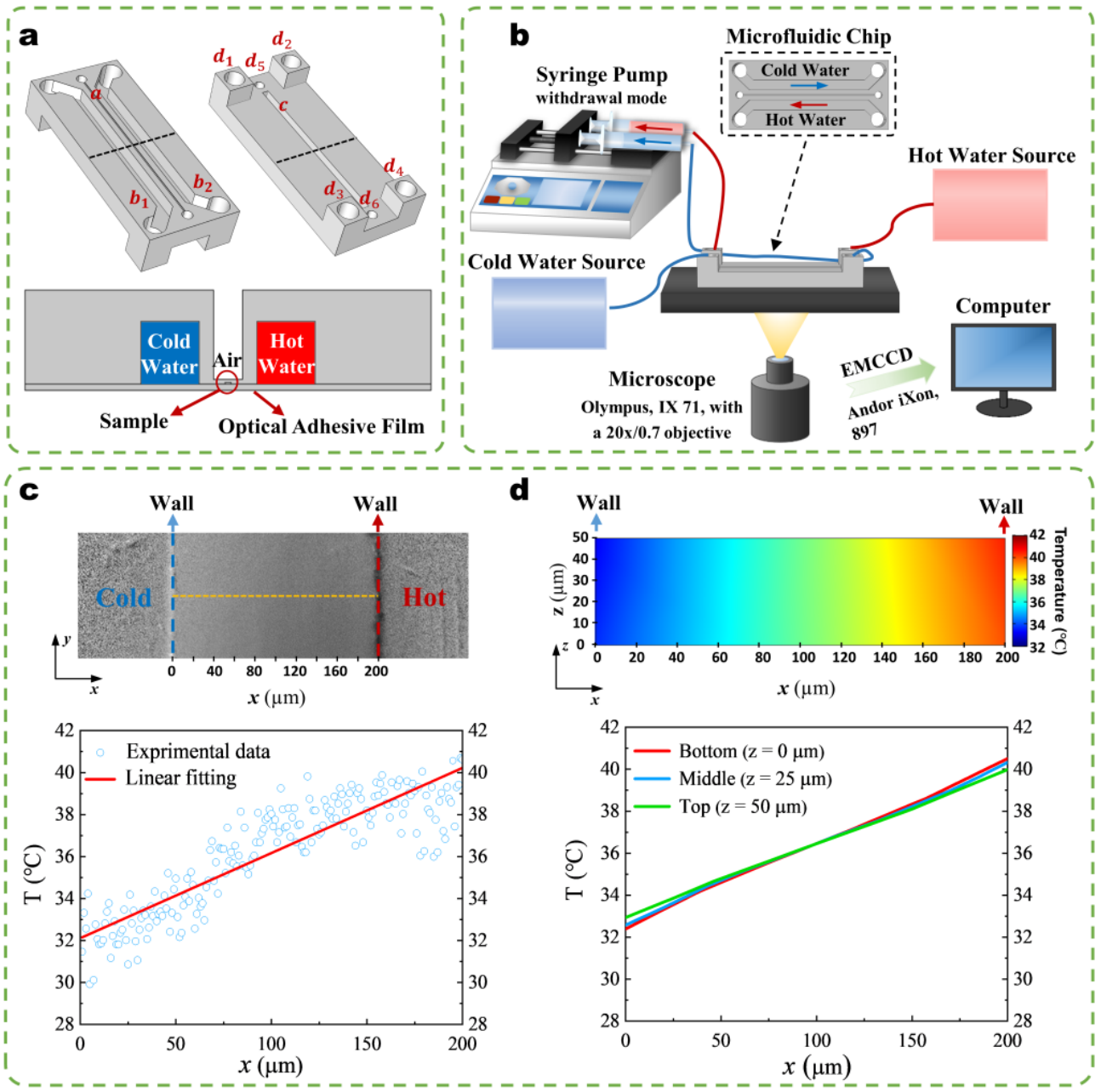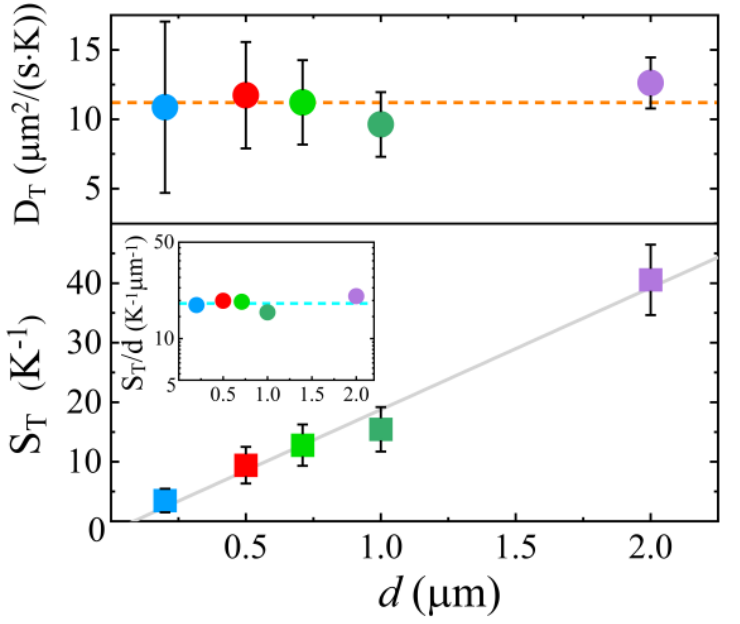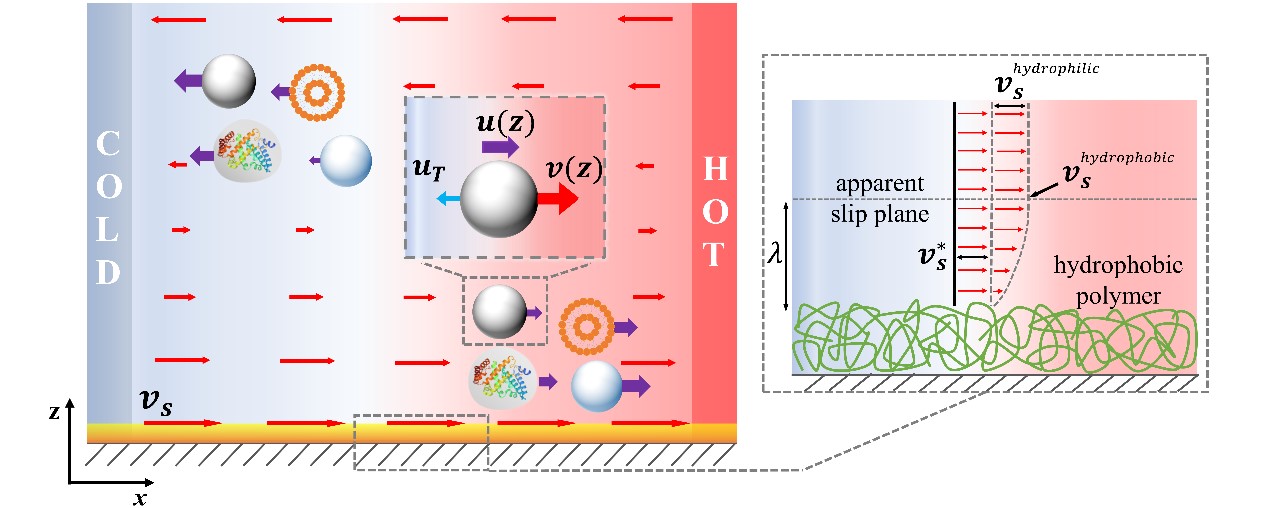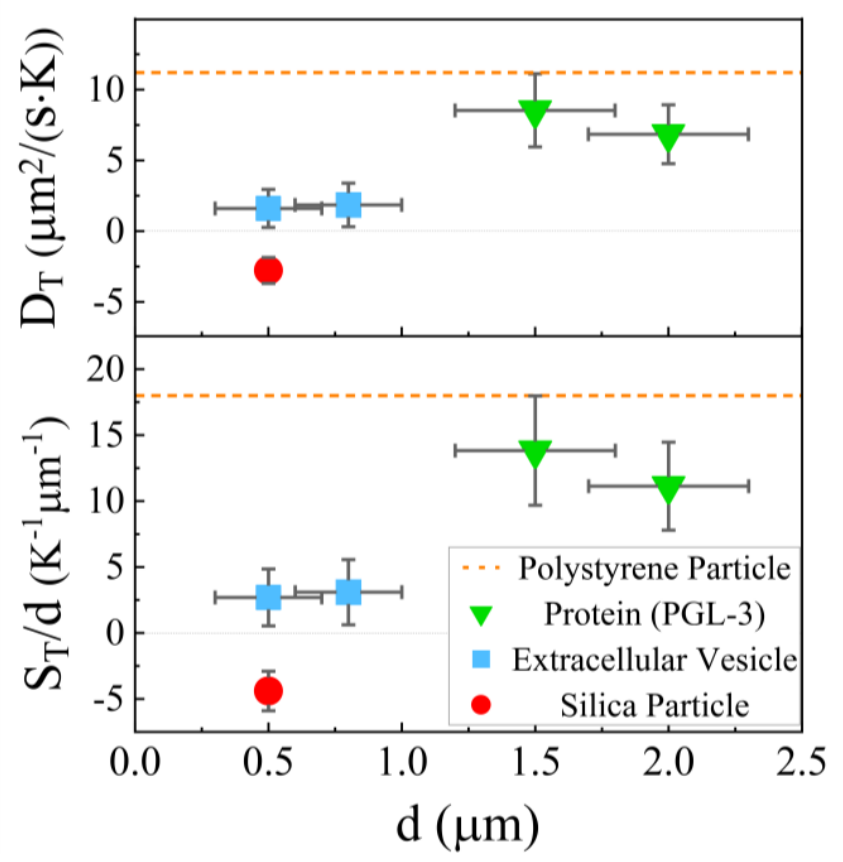- Home >> News >> Research Progress
Research Progress
New Progress in the Thermophoresis of Micro/Nano-Particles
Phoretic motion of micro/nano-particles under physical gradient field is an important means of transport and manipulation in microfluidics. Thermophoresis based on temperature gradient is a classical scientific problem, whereas the accompanying concentration/electrical field when temperature gradient is established near the particle interface cause great challenge to clarifying the mechanism of thermophoresis. It is known that the thermophoretic velocity uT of micro/nano-particles is proportional to the temperature gradient, i.e., uT=-DT?T, where DT is the thermophoretic mobility determining the response and migration of particles by the temperature gradient. Previous studies have frequently used the Soret coefficient ST (ST=DT/D, where D is the particle diffusivity) to describe the particle thermophoresis. However, the influence and variation of the Soret coefficient is still controversial due to the complicated thermophoretic mechanism including the ion migration in the electric double layer, the thermoelectric effect, and the dissipation force of solvent molecules, etc. Lately, novel techniques like using temperature gradient for nano drug delivery and using optical heating to manipulating particle motion have emerged, which results in the urgent need of clarifying the fundamental mechanism of thermophoresis of various micro/nano-particles.
Uniform and stable temperature approximately 0.05-0.1 K/mm (Fig.1) was established by the micro/nanofluidic research team in the state key laboratory of nonlinear mechanics (LNM), Institute of Mechanics, CAS. The major experimental findings are listed below: (1) The Soret coefficient ST was found to be linearly proportional to the particle diameter d (Fig. 2), which indicates a constant thermophoretic mobility DT determined by the particle surface properties. (2) In a confined space (such as in a microfluidic chip), thermo-osmosis could occur on the boundary surface under the same temperature gradient, which might also influence the particle thermophoresis and thus cannot be neglected (Fig. 3). Our experiment using hydrophobic polymer surface revealed that the surface slip could further enhance the thermo-osmosis by one order of magnitude. (3) By experiments using various bio-particles including extracellular vesicles and protein nanoparticles, we found that surface hydrophobicity could increase the particle thermophoretic mobility and the Soret coefficient by several times (Fig. 4). The results in this work could help clarifying the controversy about particle thermophoresis in existing publications. Our findings suggest an approach of using surface hydrophobicity to largely enhance both thermophoresis and thermo-osmosis, and shed light on developing microfluidic manipulation/detection techniques for bioparticles based on thermophoresis.
The above result has been published in the Journal of Colloid and Interface Science, entitled “Surface hydrophilicity-mediated migration of nano/microparticles under temperature gradient in a confined space” (https://doi.org/10.1016/j.jcis.2023.01.112). Dr. Xu ZHENG from Institute of Mechanics and Prof. Xinghua SHI from National center of nanoscience and technology are corresponding authors, Dr. Haolan XU from National center of nanoscience and technology is the first author. This work was financially supported by the National Natural Science Foundation of China, the Strategic Priority Research Program of CAS, the CAS Key Research Program of Frontier Sciences.

Fig.1. The microfluidic chip and the established temperature gradient

Fig. 2. The experimental result of the thermophoretic mobility DT and the Soret coefficient ST of PS particles.


Fig. 3. The thermo-osmosis on the boundary surface of a confined space could introduce a hydrodynamic creep flow and significantly influence the particle thermophoresis. The inset demonstrates that intrinsic slip on the hydrophobic surface could further enhance the thermo-osmosis.

Fig. 4. The thermophoresis of hydrophobic proteins (green triangles) is approximately 4 times faster than that of hydrophilic extracellular vesicles (blue squares). The thermophoretic mobility and the Soret coefficient of silica particles (red circles) are negative.
